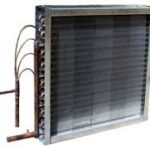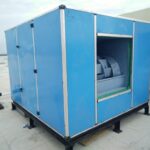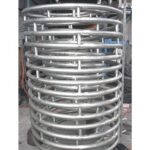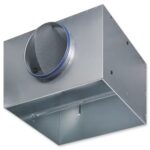Mist Eliminators

Mist Eliminators
Functions
- Mist eliminators utilize various mechanisms such as impingement, interception, and diffusion to capture liquid droplets entrained in gas streams.
- Larger droplets collide with and adhere to surfaces within the eliminator, where they coalesce and are drained away.
- Smaller droplets follow gas streamlines and are intercepted by the surfaces of the eliminator material, where they accumulate and form larger droplets.
- Tiny droplets are captured by diffusion due to Brownian motion, where they collide with the eliminator material and coalesce.
- Eliminators can be designed with different materials (such as mesh, vane packs, or fibers) and configurations based on gas flow rates, droplet sizes, and specific process requirements.
Mist Eliminators
Types
- Wire Mesh Mist Eliminator
- Vane Pack Mist Eliminator
- Fiber Bed Mist Eliminator
- Baffle-Type Mist Eliminator
- Cyclonic Mist Separators
- Electrostatic Precipitators (ESP)
- Packed Bed Scrubbers
Mist Eliminator
Versatile Applications
- Oil and Gas Industry:
- Used in oil refineries and natural gas processing plants to remove liquid droplets from gas streams before further processing or transportation.
- Chemical Manufacturing:
- Essential in chemical plants to prevent liquid carryover in gas streams, ensuring product purity and protecting downstream equipment.
- Power Generation:
- Deployed in power plants, especially in gas turbine systems, to eliminate moisture from combustion gases, improving turbine efficiency and lifespan.
- Pulp and Paper Industry:
- Utilized in pulp and paper mills to control emissions and recover valuable process liquids from vent streams.
- Steel and Metal Processing:
- Applied in steel mills and metal processing plants to capture oil mist and metal particulates from exhaust gases, enhancing air quality.
Mist Eliminator
Roles
- Environmental Compliance: Mist eliminators help industries meet environmental regulations by reducing emissions of liquid droplets and particulates into the atmosphere.
- Equipment Protection: They protect downstream equipment such as compressors, turbines, and heat exchangers from damage caused by liquid carryover, which can lead to corrosion and reduced operational efficiency.
- Product Quality: In manufacturing processes, mist eliminators ensure product purity by preventing contamination from liquid droplets in gas streams.
- Process Efficiency: By removing moisture and liquid droplets from gas streams, mist eliminators improve the efficiency and reliability of processes such as gas separation, drying, and chemical reactions.
- Worker Safety: In industrial settings, mist eliminators contribute to a safer working environment by reducing exposure to harmful chemicals and aerosols carried in gas streams.
- Energy Conservation: They help conserve energy by preventing the loss of valuable process liquids carried in gas streams.
Other Air Handling Units We Manufacture
Direct Expansion Coils
Direct Expansion Coils also known as evaporator coils, are heat exchangers used in HVAC systems where refrigerant directly absorbs heat from the air passing over the coils

Air Washer Unit
Air Washer Unit is a type of HVAC equipment that combines air cleaning and humidification functions in one system. It uses a water-saturated filter or media

Heat Transfer Coils
Heat Transfer Coils are components used in HVAC systems to either add or remove heat from the air flowing through them. They consist of tubes that carry a heating or cooling medium

Plenum Box
Plenum Box serves as a junction point in HVAC ductwork, collecting conditioned air from a main supply duct and evenly distributing it to multiple outlets or diffusers throughout a building.

Volume Control Dampers
Volume Control Dampers are mechanical devices used in HVAC systems to regulate and control the volume of airflow within ductwork. They adjust the size of the duct opening, typically through adjustable blades

